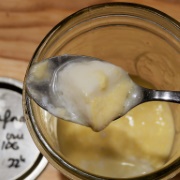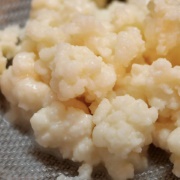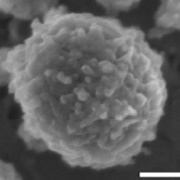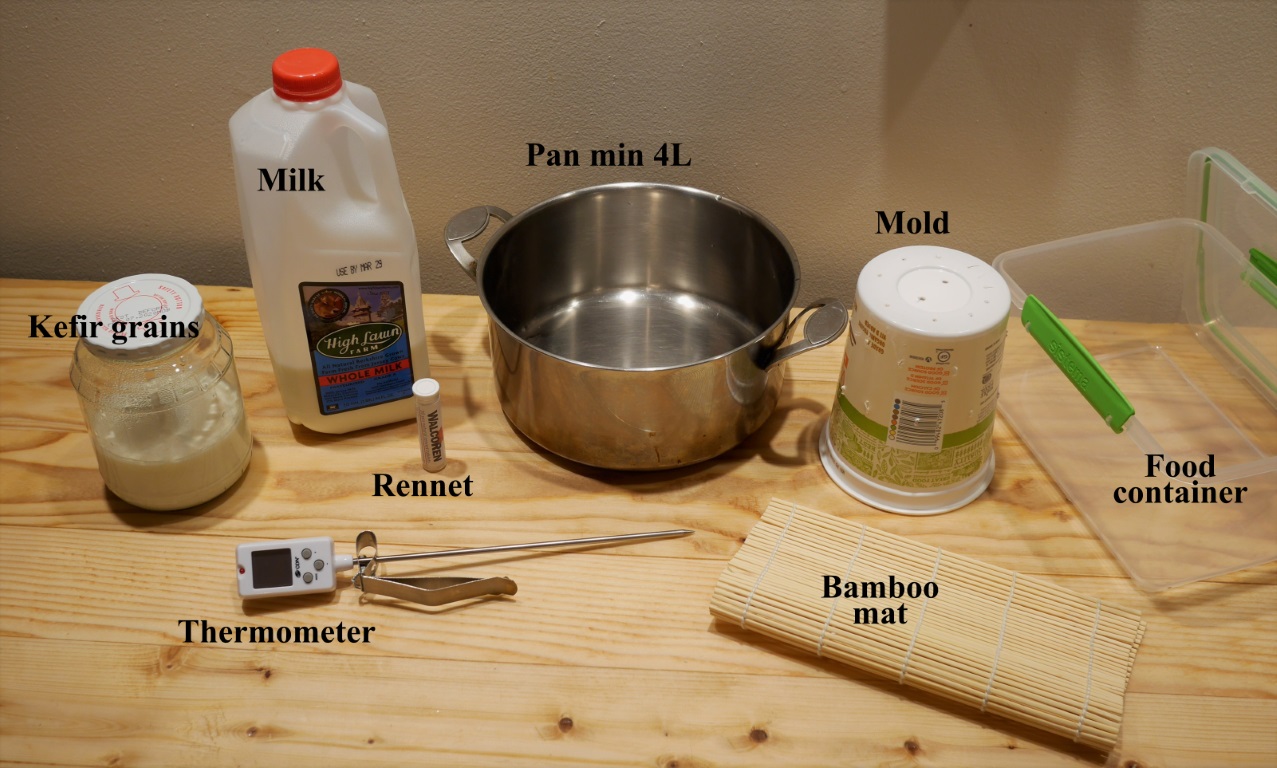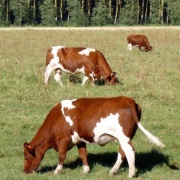What is cheese?
The origin of cheese is very likely to be as old as the beginning of agriculture and farming. People rapidly discovered it was a good way of preserving milk in an eatable form. Cheese is a product made of one single product: milk. Milk is coagulated to remove a large part of its water content. This coagulation is the result of its own fermentation and the addition of rennet (animal or vegetal enzymes) or other acid (i.e. vinegar). Cheese making counts generally three steps:
- Coagulation (milk acidification and separation of curd and lactoserum)
- Draining and shaping
- Ripening, development
In the following image are shown the different varieties of cheeses depending on the steps and processes applied to the milk and curd.
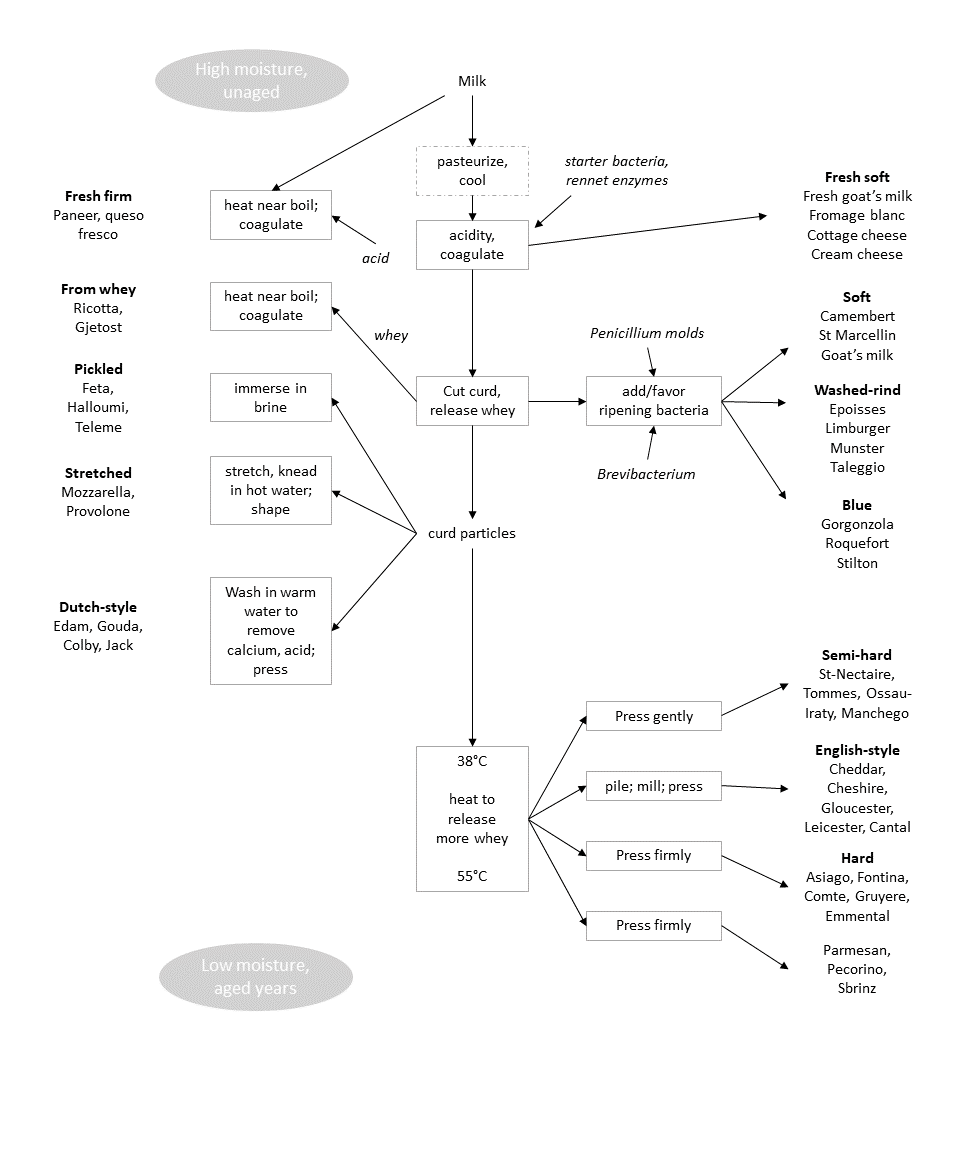
Source: On Food and Cooking: The Science and Lore of the Kitchen, Harold McGee
Why making cheese is an art?
The variety of cheeses is huge (France on its own counts more than 1,200 different types of cheeses!). It is impressive as only one product can transform to so many different forms. Cheese development depends on multiple parameters:
- milk quality
- ferments (type and diversity of bacterias, yeast)
- terroir (French word designating the local environment)
- temperature
- humidity
Varying one or more of these parameters can give very different results. In particular, humidity is crucial and allows to favor some bacteria over others. Some bacteria make the curd evovle in different ways. For instance, to make a washed-rind cheese, the rind is washed with a brine for the first days. Salt limits the development of bacteria. There is thus room for brevibacterium that like humidity a lot, they can install durably on the curd rind.
Cheese ripening can actually be seen as bacteria breeding. Cheese making consists in setting up an ideal environment for a given type of bacteria. They can then install and prevent other micro-organisms to develop. That is what a cheesemonger is mastering. He knows how to play with the different parameters to let bacteria develop the flavors and texture he wants.
